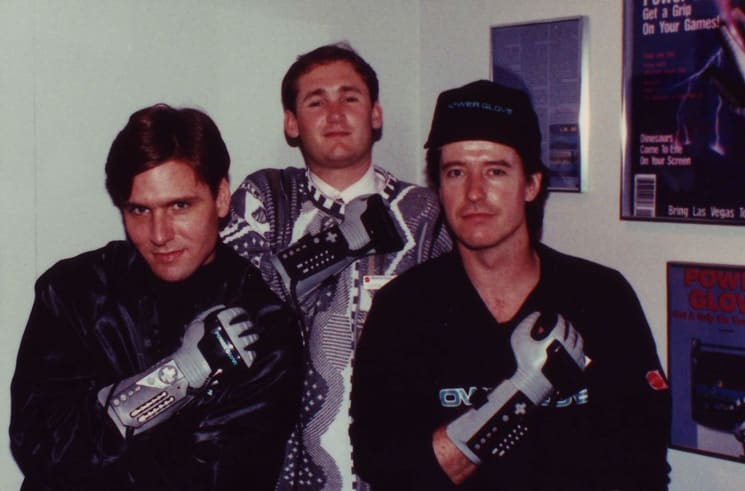Andrew Austin and Adam Ward's The Power of Glove tells the story of gaming's most beloved disaster: the Power Glove.
The notorious Nintendo controller was one of the first iterations of wearable technology and VR gaming, but to say the Glove was a failure is an understatement. This film painstakingly takes us through the series of mishaps that led to its demise; compatible games weren't ready for the Glove's release, developers weren't able to scale the Glove's technology down to an affordable price tag, and Nintendo in general dismissed it as a gimmick.
Ultimately, the Power Glove was pushed onto an audience that thought this futuristic device would give them total control over their gaming experience; what they got instead was two new Power Glove games and a bunch of buggy, unresponsive controls. After failing to perform well critically or commercially upon release, the Power Glove was scrapped.
The Power of Glove banks on nostalgia, and its interstitials make use of trendy, retro space-age computer graphics and a pulsating John Carpenter-esque score. Content-wise, though, it falls a little flat. The specific technical origins of the Power Glove are a little dry, and will probably only interest those who nerd out over old-school tech and programming.
The story doesn't become fascinating until the concept of using the Glove for video games comes into play. That's particularly a shame because, at barely over an hour, the documentary doesn't make as much use of its biggest asset — namely, interviews with people who have transformed the glove into a new cultural objet — as it should.
Taking a non-user-friendly product marketed by tone-deaf execs and turning it into something emblematic of their identities makes a bigger statement than the story of the Power Glove itself. These die-hard enthusiasts have integrated the glove into their own personal brand: that of a tech geek or game master, a lover of fantasy and imagination. Today's Power Glove owners have hacked and re-worked the Power Glove into wearable art, a high-tech DJ system and more. Shining a light on postmodernist art within the gaming world is so rarely done that it would have been more engaging to delve into the creative process behind taking a pre-existing object and playing with its form and function to create something entirely different and new.
Nostalgia for the '80s may be all the rage, but The Power of Glove would have benefited from taking a more forward-thinking stance on its subject matter, rather than languishing in the past.
(Independent)The notorious Nintendo controller was one of the first iterations of wearable technology and VR gaming, but to say the Glove was a failure is an understatement. This film painstakingly takes us through the series of mishaps that led to its demise; compatible games weren't ready for the Glove's release, developers weren't able to scale the Glove's technology down to an affordable price tag, and Nintendo in general dismissed it as a gimmick.
Ultimately, the Power Glove was pushed onto an audience that thought this futuristic device would give them total control over their gaming experience; what they got instead was two new Power Glove games and a bunch of buggy, unresponsive controls. After failing to perform well critically or commercially upon release, the Power Glove was scrapped.
The Power of Glove banks on nostalgia, and its interstitials make use of trendy, retro space-age computer graphics and a pulsating John Carpenter-esque score. Content-wise, though, it falls a little flat. The specific technical origins of the Power Glove are a little dry, and will probably only interest those who nerd out over old-school tech and programming.
The story doesn't become fascinating until the concept of using the Glove for video games comes into play. That's particularly a shame because, at barely over an hour, the documentary doesn't make as much use of its biggest asset — namely, interviews with people who have transformed the glove into a new cultural objet — as it should.
Taking a non-user-friendly product marketed by tone-deaf execs and turning it into something emblematic of their identities makes a bigger statement than the story of the Power Glove itself. These die-hard enthusiasts have integrated the glove into their own personal brand: that of a tech geek or game master, a lover of fantasy and imagination. Today's Power Glove owners have hacked and re-worked the Power Glove into wearable art, a high-tech DJ system and more. Shining a light on postmodernist art within the gaming world is so rarely done that it would have been more engaging to delve into the creative process behind taking a pre-existing object and playing with its form and function to create something entirely different and new.
Nostalgia for the '80s may be all the rage, but The Power of Glove would have benefited from taking a more forward-thinking stance on its subject matter, rather than languishing in the past.
